Organization Culture
Organization culture comprises of diverse attitudes, values, feelings, practices, behaviours, norms, ideas and believes. Culture is a system constituted of shared meaning amongst members of a particular entity that differentiates it from other entities (Alvesson, 2002, p.2).
Organization Culture Depends on:
- Employees’ recruitment procedures.
- Diversity of human resources.
- Management practices of incorporating cultural differences in organizations.
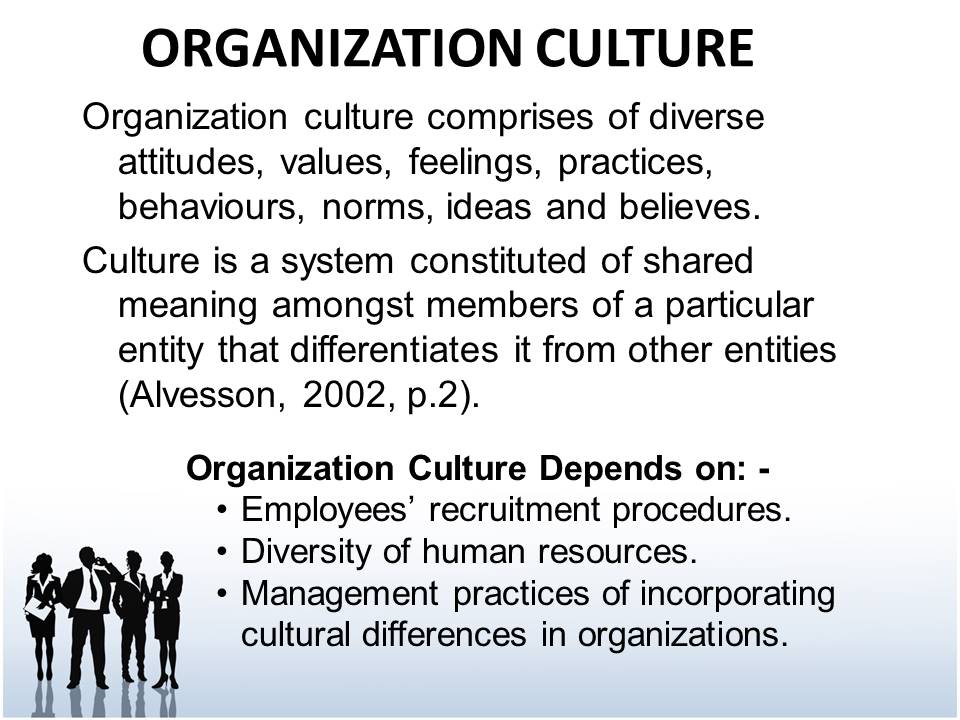
Hypothesized Cultural Dimensions
- Surface level – Depicted by organization’s physical environment, language, products and adopted symbols.
- Espoused values – Depicted by leadership commitment to goals and strategies.
- Basic assumptions – Entails development of common believes.
Basic assumptions indicate that every employee contribute towards organization growth, hence development of organization culture (Abu-Jarad, Yusof & Nikbin, 2010, p. 10).
Note: Cultural dimensions depend on the host country.
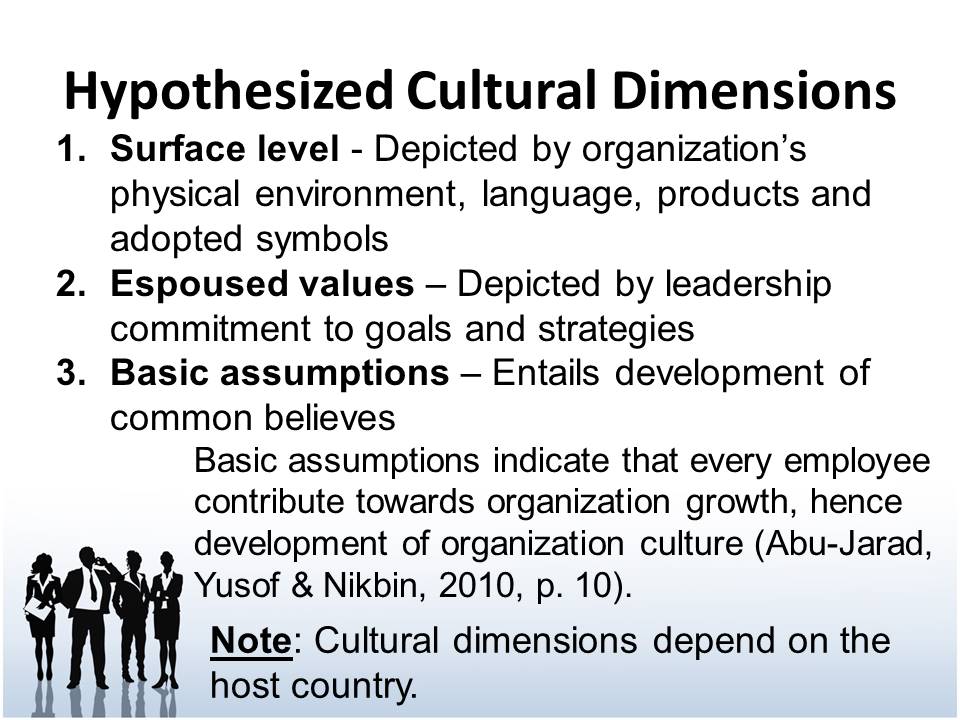
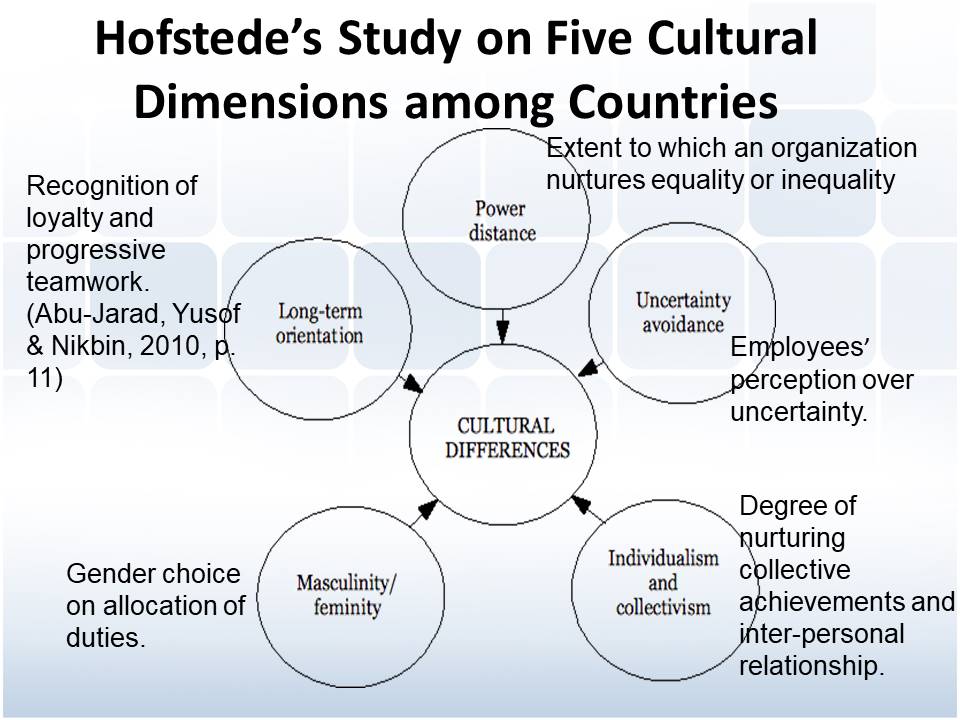
International Recruitment
- Ethnocentric Approach – recruiting from parent country of the international firm to work in a foreign countries. Involves self-selection, development from a pool of candidates, assessment of candidates’ technical skills and mutual decision-making.
- Polycentric Approach – Recruiting only from the host country (assists organization in reducing international cost of operations).
- Geocentric Approach – Recruiting for the firm’s international operations internally.
International Success = International Recruitment/Selection Strategies (Scullion, 2006)
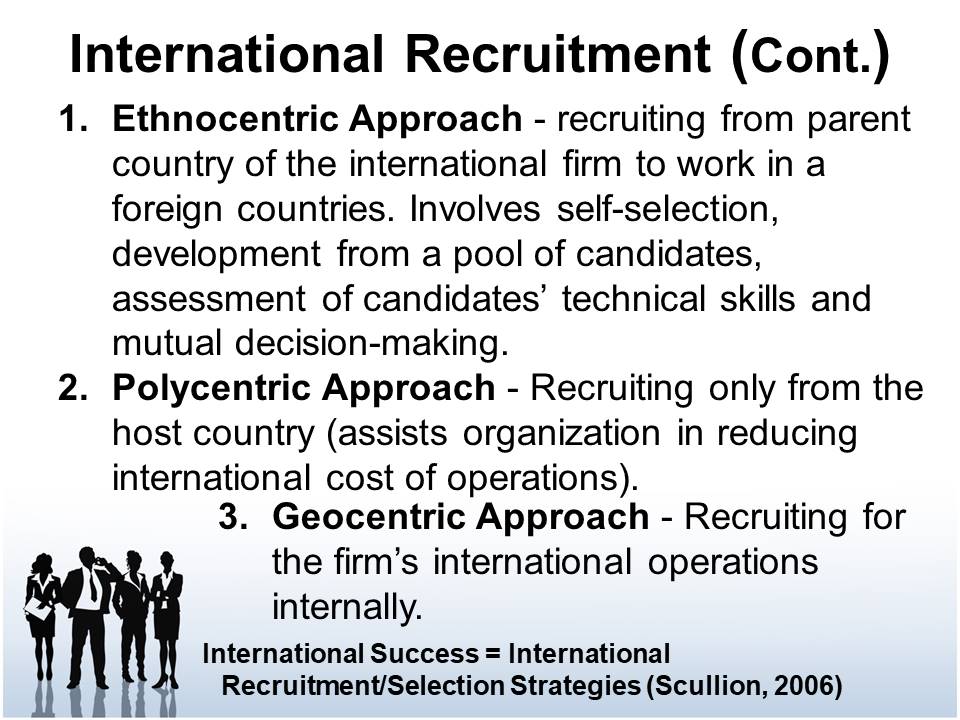
International Aspects Considered during International Recruitment
- Global competitiveness of potential job candidates.
- knowledge and understanding of the global market.
- Candidate’s availability and skills on the global market.
- Diversity of international labour market.
- Compliance with regulations – Local government’s restrictions/requirements such as immigration rules, work-visa requirements and evidence for need to recruit locally (Stevens, 2004).
- Work-life balance – Job sharing, flexible working hours, compressed working hours, and working remotely (Clutterbuck, 2003).
- Compensation – Remuneration packages (Kandula, 2007).
- HR policies and practices for a sustainable working environment (Duxbury & Higgins, 2005, p. 113).
- Flexibility – Working remotely and video conferencing to increases effectiveness in time management (Richenda, 2006, p. 67).
- Annual leaves, work-offs, career breaks, job sharing and handover arrangements (Clutterbuck, 2003).
- Stakeholders’ requirements (Shields, 2003).
- Company Values – To enhance continuous improvement, competitiveness (Cohen, 2006).
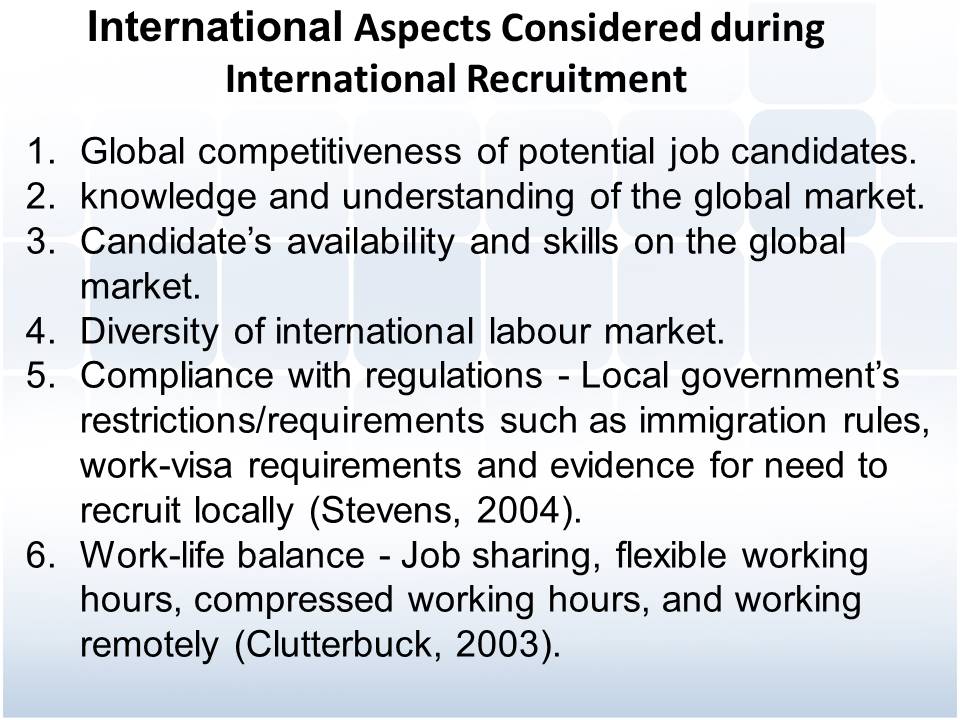
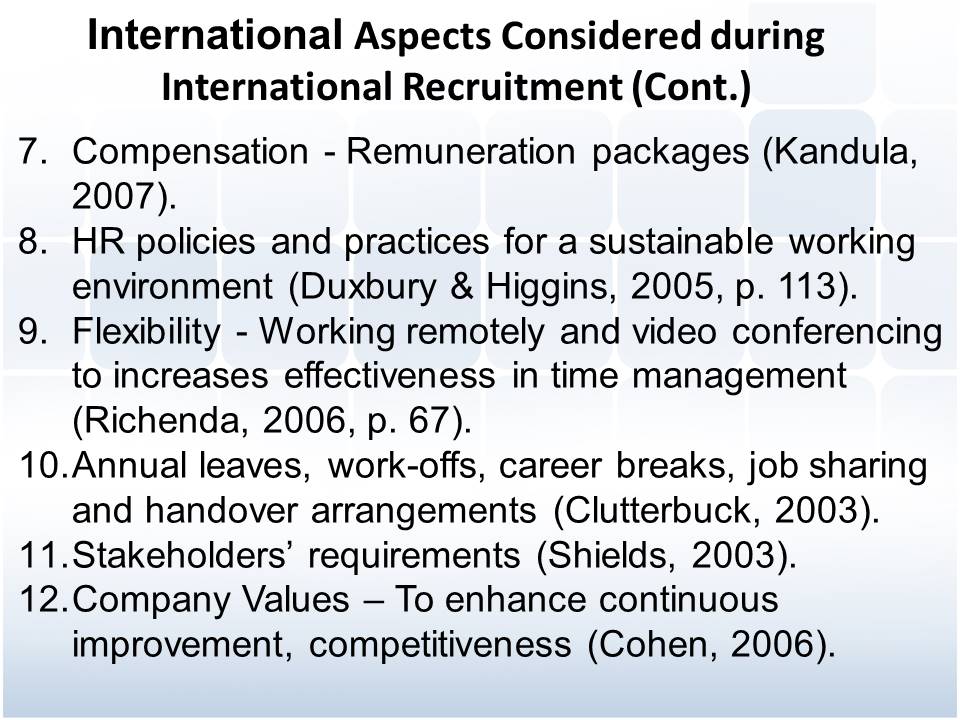
Training and Development
- Pre-move training – Familiarization with dynamics of the host country such as culture, customers, and languages, for better and quicker adjustment (Pravin, 2008).
- Continual training – To improve knowledge/skills and address work-related stress to increase level of productivity (Majunder, 2012).
- Repatriation training– To refresh employee regarding workplace and practices of their home country.
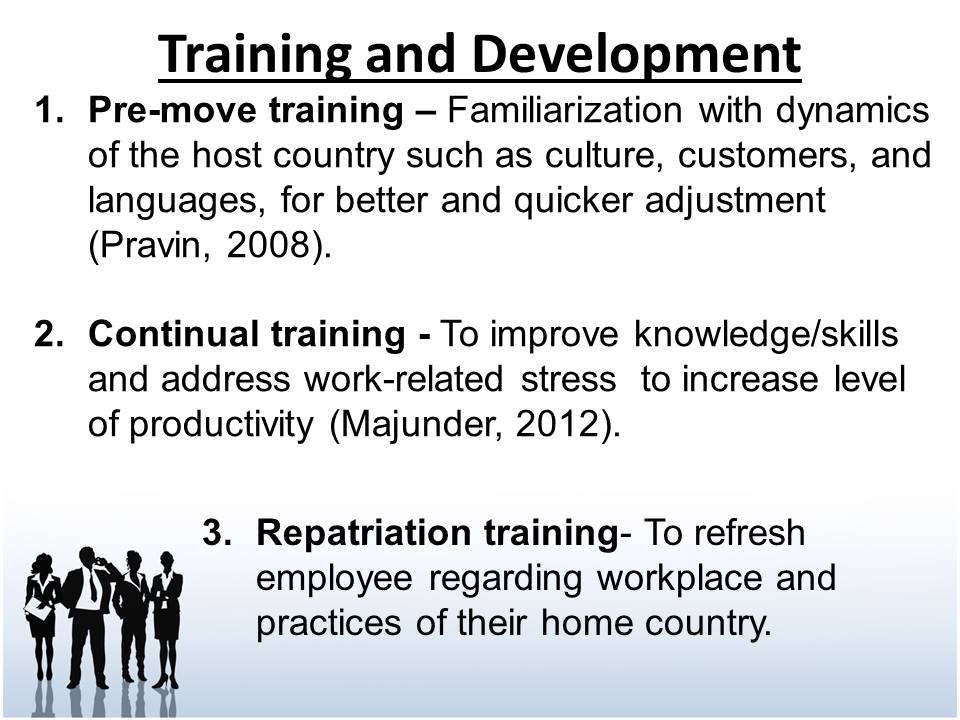
Reference List
Abu-Jarad, I., Yusof, N., & Nikbin, D. (2010). A review paper on organizational culture and organizational performance. International Journal of Business and Social Science, 1(3), 26-46.
Alvesson, M. (2002). Understanding organizational culture. London, UK: Sage.
Clutterbuck, D. (2003). Managing work-life balance: a guide for HR in achieving organizational and individual change. London, UK: Chattered Institute of Personnel and Development.
Cohen, D. (2006). Inside the box: leading with corporate values to drive sustained business success. Mississauga, Ontario: John Wiley and Sons.
Duxbury, L., & Higgins, C. (2005). Work-Life Balancing in the New Millennium. Where are we? Where we are going? Ottawa, Canada: Canadian Policy Research Networks.
Kandula, S. (2007). Human resource management in practice: with 300 models, techniques and tools. New Delhi, India: Prentice-Hall.
Majunder, T. (2012). Human resource management practice and employee satisfaction. International Review of Management and Marketing, 2(1), 52-58.
Pravin, D. (2008). Human resource management. New Delhi, India: Pearson Education.
Richenda, G. (2006). The myth of work-life balance: the challenge of our time for men, Women and societies. Chichester, NH: John Wiley & Sons.
Scullion, H. (2006). Global staffing. New York, NY: Routledge.
Shields, F. (2003). Performance and rewards management: an introduction. Cambridge, UK: Cambridge University Press.
Stevens, J. (2004). The second work-life balance study: results from the employer’s Survey. London, UK: Department of Trade and Industry.